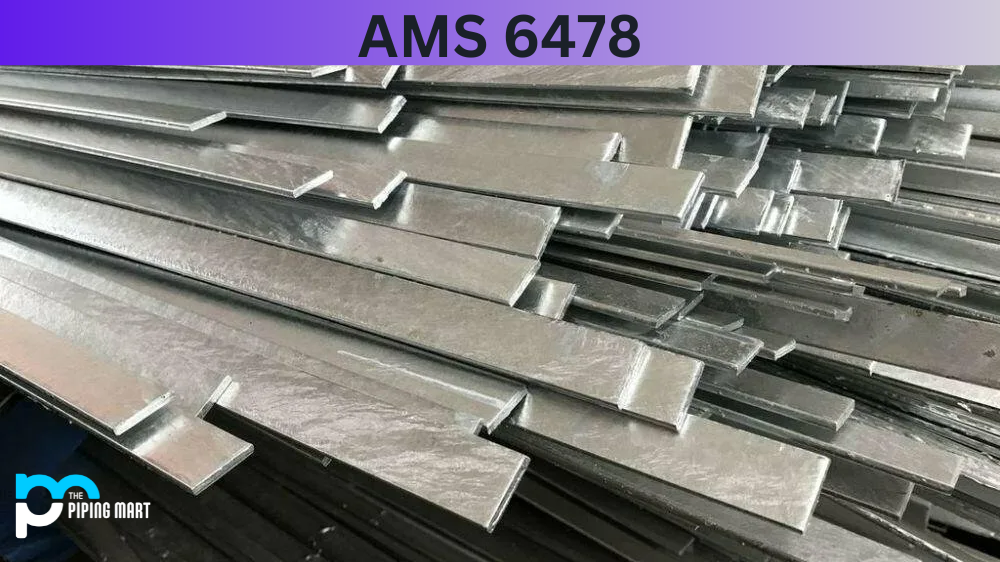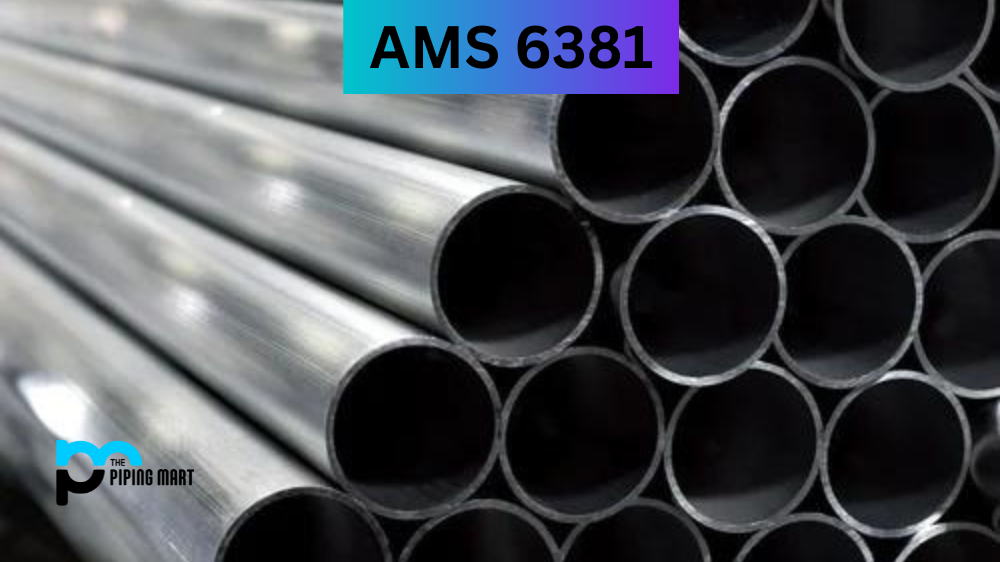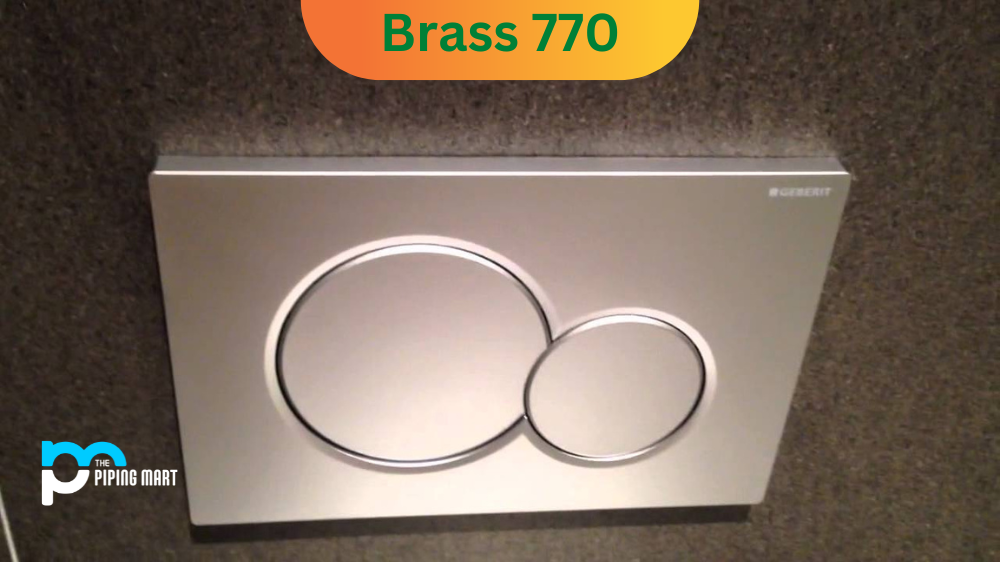If you are in the aerospace or military industry, you are probably familiar with AMS 6478. It is a high-strength, low-alloy steel commonly used to manufacture aircraft components like gears, shafts, and bearings. But what exactly is AMS 6478, and why is it such a popular material for these applications? This blog post will delve into the composition, physical and mechanical properties, uses hardness, and heat treatment of AMS 6478, giving you a comprehensive understanding of this important material.
What is AMS 6478?
AMS 6478 (also known as Aermet 100) is a high-strength, low-alloy steel frequently used in critical aerospace and defence applications. This material boasts exceptional durability and can withstand extreme temperatures and pressure fluctuations without compromising its structural integrity. AMS6478 metal is commonly used to manufacture aircraft landing gear, engine components, and other high-stress structures. Its strength-to-weight ratio makes it an attractive option for designers looking to optimize performance while minimizing weight. If you’re looking for a material that can withstand the most demanding conditions without faltering, AMS6478 metal may be just what you need.
AMS 6478 Composition
AMS 6478 is a type of steel in the low-alloy high-strength (HSLA) category. Its chemical composition includes carbon, manganese, phosphorus, sulfur, silicon, chromium, nickel, and molybdenum. The exact composition varies depending on the specific requirement of the application and the manufacturer. However, AMS 6478 generally has a carbon content of about 0.25%, giving it high strength and hardness.
| AMS 6478 Chemical Composition: | |
|---|---|
| Carbon | 0.23% |
| Nickel | 11.10% |
| Cobalt | 13.40% |
| Chromium | 3.10% |
| Molybdenum | 1.20% |
| Iron | Balance |
AMS 6478 Physical Properties
AMS 6478 has a density of 7.85 g/cm³ and a melting point of around 1450°C(2642°F). It is a ferromagnetic material, which means it can be magnetized. Regarding its thermal properties, AMS 6478 has a thermal conductivity of about 50 W/mK, which is relatively low compared to other metals. It also has a low coefficient of thermal expansion, which means it does not expand or contract much when exposed to changes in temperature.
| Property | ||
|---|---|---|
| Density, lb /in3 | .285 | |
| Modulus of Elasticity | 28.2 x 103 ksi | |
| Electrical Resistivity | 70.0° F | 259.0 ohm-cir-mil/ft |
| Critical Temperature | AC1 – 1065° F | AC3 – 1525° F |
| Mean Co of Thermal Expansion | Annealed | Heat Treated |
| 600.0° F | 6.01 x 10-6 in/in/° F | 6.08 x 10-6 in/in/° F |
AMS 6478 Mechanical Properties
AMS 6478 has excellent mechanical properties, making it ideal for applications where strength and toughness are essential. Its ultimate tensile strength (UTS) can reach up to 1650 MPa (240 ksi), while its yield strength can be as high as 1320 MPa (191 ksi). The material also has good fatigue and impact resistance, making it perfect for components that experience high loads and stresses.
| MECHANICAL PROPERTIES | |||||||||
|---|---|---|---|---|---|---|---|---|---|
| PROPERTY | MINIMUM | MAXIMUM | |||||||
| Yield Strength Range (MPa) | 1620 | 1724 | |||||||
| Tensile Strength Range (MPa) | 1931 | 1965 | |||||||
| Elongation (%) | 8.0% | 14.0% | |||||||
| Hardness (HRC) | – | 53 | |||||||
| Modulus of Elasticity (GPa): – | |||||||||
| Machineability General Index: – | |||||||||
AMS 6478 Uses
AMS 6478 is mainly used in the aerospace and defence industries to produce gears, shafts, and bearings. These components require high strength, fatigue resistance, and toughness, which AMS 6478 can provide. The material is also suitable for structural applications like landing gear and hydraulic systems. Outside the aerospace and defence sectors, the oil and gas industry also uses AMS 6478 in drilling equipment and gas turbine components.
AMS 6478 Hardness
AMS 6478 has a high hardness rating of approximately 300-350 HBW. This means it is extremely wear-resistant, making it ideal for friction and abrasion applications. Furthermore, AMS 6478 has good machinability, quickly shaping and forming into various components.
AMS 6478 Heat Treatment
AMS 6478 steel can be heat treated to improve its mechanical properties. The most common heat treatment process involves quenching and tempering the material. The material is rapidly cooled during quenching using a water-based fluid to promote martensitic transformation. Tempering involves reheating the material to a lower temperature to relieve internal stresses and improve ductility.
Conclusion:
AMS 6478 is a crucial material in the aerospace and defence industries, possessing excellent mechanical properties, high strength, and hardness. Quenched-and-tempered heat treatment can further improve these properties. Its low-alloy, high-strength chemical composition and wear resistance make it ideal for producing gears, shafts, and bearings. It can also be machinable to suit various component requirements, making it a versatile material. In summary, AMS 6478 is a material that has proven its worth in critical applications, and its importance will only increase in the years to come.

Pipingmart is a B2B portal that specializes in metal, industrial and piping items. Additionally, we share the latest information and information about materials, products and various types of grades to assist businesses that are involved in this business.




